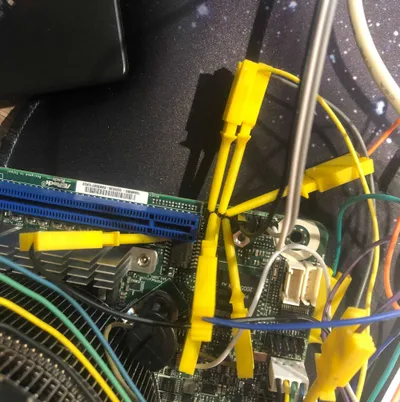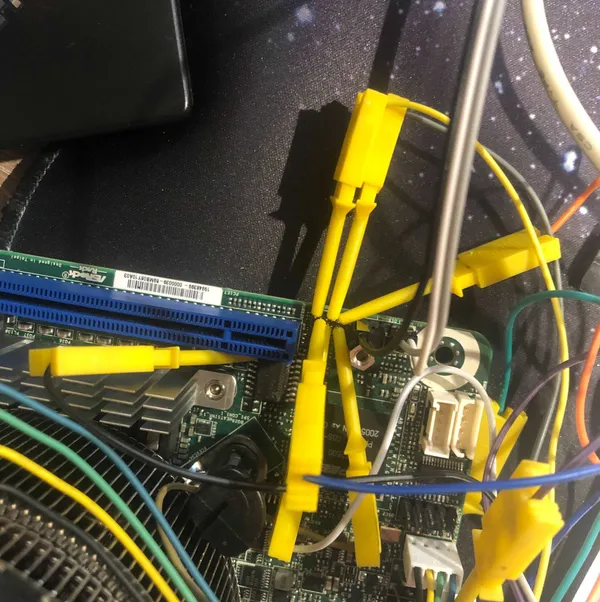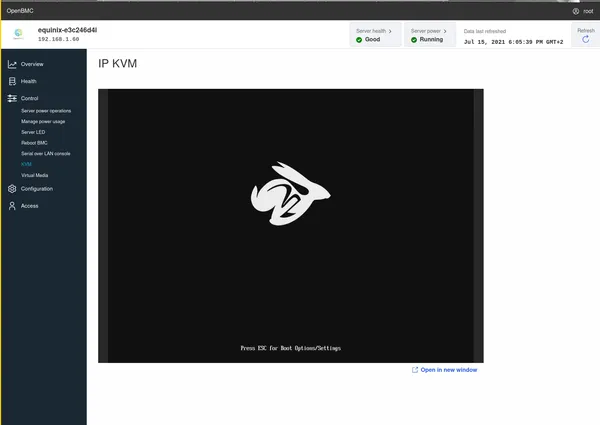Coreboot on the ASRock E3C246D4I

A new toy to play with OpenBMC
I wanted to play around with OpenBMC on a physical board and this article led me to the ASRock E3C246D4I. It's a not overly expensive Intel Coffee Lake board featuring an Aspeed AST2500 BMC. So the first thing I did was to compile OpenBMC. My computer was in for a quite a chore there. It needed to download 11G of sources and compile those. Needless to say this takes a long time on a notebook computer and is best done overnight. I flashed the image via the SPI header next to the BMC flash. I used some mini crocodile clips to do this at first.

To set up a nice way to play around with OpenBMC I attempted to hook up an EM100Pro, a flash emulator via the header. This did not seem to work. I'm not sure what was going on here. It looked like the real flash chip was not reliably put on HOLD by the EM100. When tracing the SPI commands with the EM100 0xff was the response to all the (fast)read commands. I guess a fast SPI programmer will do for now in the future. OpenBMC makes updates quite easy though: just copy the image-bmc to /run/initramfs/ and rebooting will launch an update which takes a minute or so (faster than my external programmer).
So what can OpenBMC do on that board? Not much, it seemed at first. Powering the board on and off did not work and not much else either. The author of the port, Zev Zweiss, helped me a lot to get things working though. A bit of manual gpio magic and powering on and off works well. So the upstream code needs a bit of polish to get working but using the branch from the original author of this board port fared much better: sensors and power control work fine. Fan control is not implemented though, but I might look into that. Max fan speeds might be ok in a datacenter but not in my home office for sure!
Coreboot
The host flash is muxed to the BMC SPI pins so the BMC can easily (re)flash the host firmware (and is even faster at this than the host PCH due to the high SPI frequency the BMC can use). To get that working a few things needed to be done on the BMC. The flash is hooked up to the BMC SPI1 master bus which needs to be declared in the FDT. U-boot needs to set the SPI1 controller in master mode. The mux is controlled via a GPIO. 2 other GPIOs also need to be configured such that the ME on the PCH does not attempt to mess with the firmware while we're flashing (ME_RECOVERY pins). A flash controlled by a BMC is a very comfortable situation for a coreboot developper, who needs to do a dozen reflashes an hour, so hacking on coreboot with this device was a bliss (as soon as I got the uart console working).
I don't have the schematics to this board so I'll have to do with what the vendor AMI firmware has set up and decode it from the hardware registers. This worked well: there is a tool to generate the PCH GPIO configuration in util/intelp2m which outputs valid C code that can directly be integrated into coreboot.
I built a minimal port based on other Intel Coffeelake boards and after fixing a few issues like the console not working and memory init failing, it seemed to have initialised all the PCI devices more or less correctly and got to the payload! The default payload on X86 with coreboot is SeaBIOS. It looks like this payload does not like this board very much though: it hangs in the menu. I never got to boot anything with it. Tianocore (EDK2) proved a much better match and was able to boot from my HDD attached via USB without any issues. Booting the virtual CD-ROM from the BMC also worked like a charm.

You can find the code on gerrit. Most things like USB, the 10G NICs, BMC IP-KVM and BMC Serial on Lan are working with that code.
What's next: Get a LinuxBoot payload working and write some public documentation on how to set things up for OpenBMC and coreboot for this nice board. Maybe I can also get u-bmc working on this board? A few seconds vs a few hours in compiletime does seem like a compelling argument.